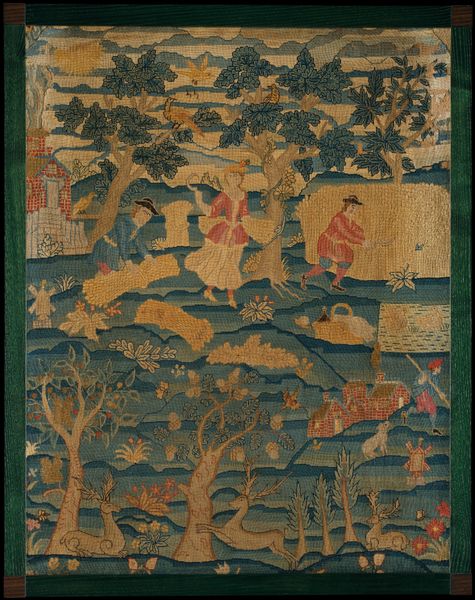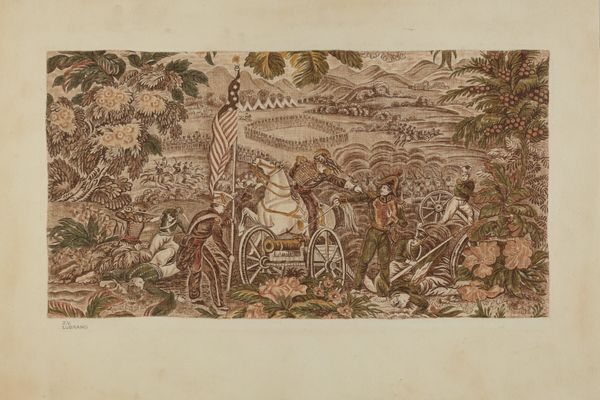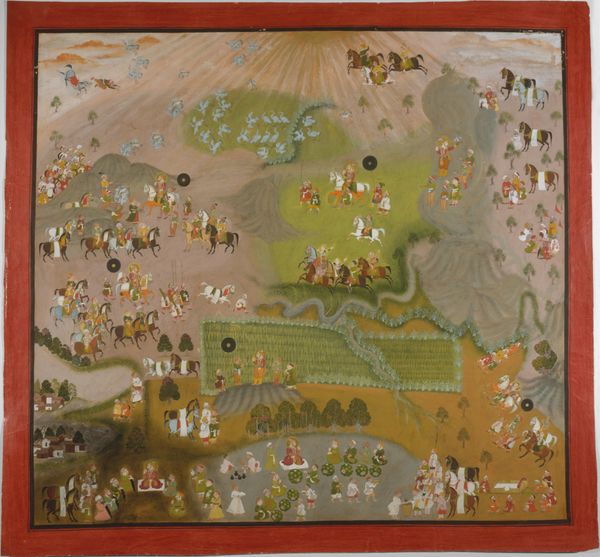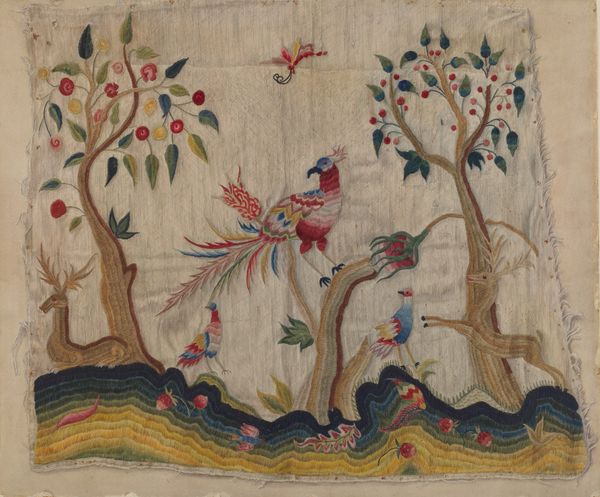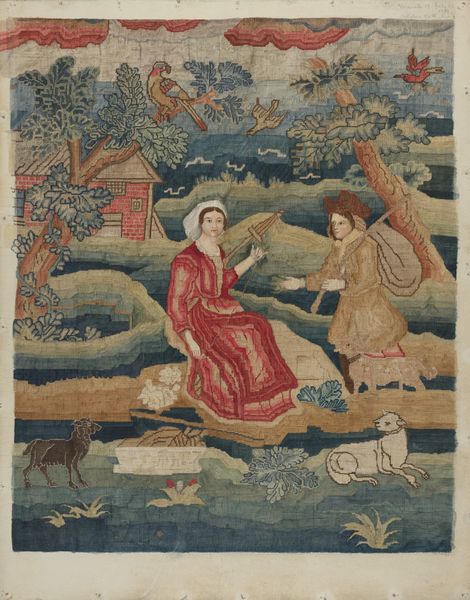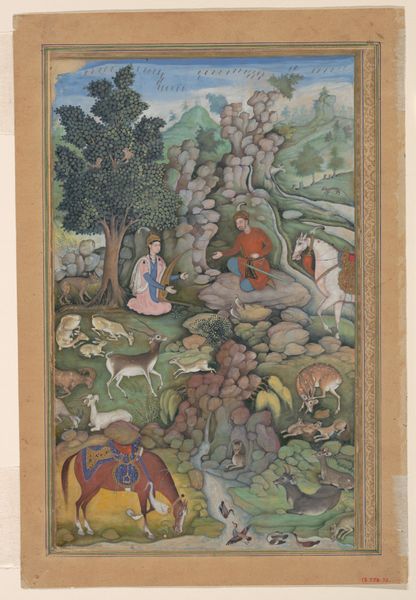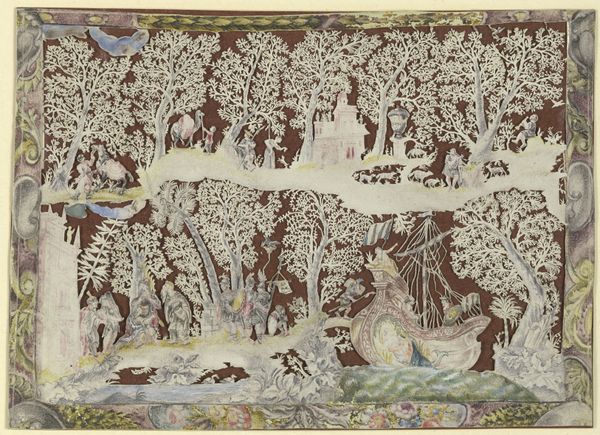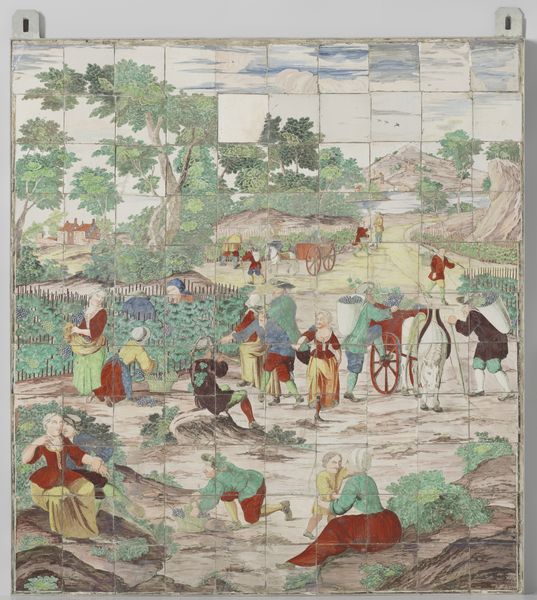
#
tree
#
abstract painting
#
animal
#
folk art
#
handmade artwork painting
#
oil painting
#
tile art
#
earthy tone
#
naive art
#
men
#
united-states
#
painting art
#
earthenware
#
watercolor
Dimensions: 18 x 25 in. (45.7 x 63.5 cm)
Copyright: Public Domain
Editor: This piece, "Shepherd and Shepherdess," was made around 1767-1770. It’s currently housed here at the Met. What strikes me immediately is the sort of flattened, almost tapestry-like quality of the whole composition. What are your thoughts when you examine this? Curator: Precisely. Ignoring, for the moment, any narrative elements, what you observe first is the picture plane itself. The artist declines a naturalistic perspective, opting instead for a stacked composition, where figures and landscape elements exist in a relatively shallow depth of field. Notice, too, how the textures created by the stitching create intricate surface patterns. What words would you use to describe these formal relations? Editor: Well, there’s definitely a tension between representation and abstraction. The trees, for example, are clearly trees, but they’re also rendered as these almost geometric shapes, and the use of the stitches enhances the material presence. Do you think this enhances or detracts from the work? Curator: I would say it establishes a fascinating dynamic. The push and pull between the object depicted and its mode of depiction becomes the central drama. Consider, for example, the almost rhythmic repetition of the rounded forms in the foliage and how they mirror the undulating landscape. Are they not primarily a sequence of interacting formal arrangements of line and tone? Editor: That's an interesting way to see it. I guess I was so focused on trying to interpret the subject matter I wasn't fully appreciating the way the artist manipulates the materials and creates those visual rhythms you're describing. Curator: Indeed, by recognizing that formal aspects such as texture, color, and composition are important by themselves, they often express deeper thematic implications of any artwork. Editor: Okay, that definitely gives me a new perspective on how to approach art like this! Thanks. Curator: My pleasure; considering formal analysis enables close looking at artwork for enhanced appreciation.
Comments
No comments
Be the first to comment and join the conversation on the ultimate creative platform.
